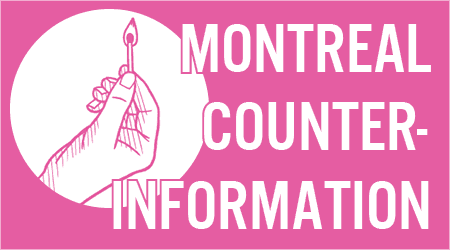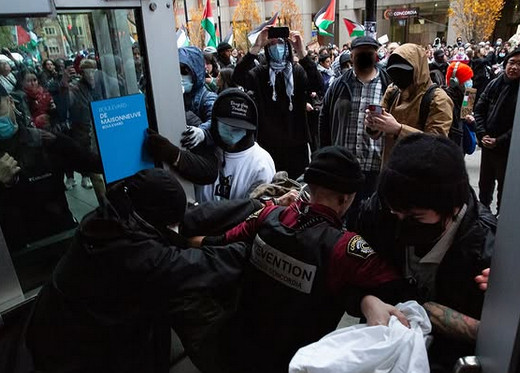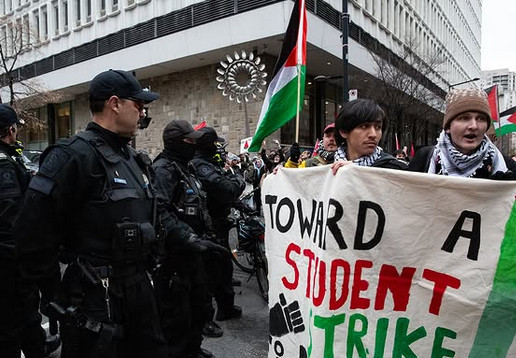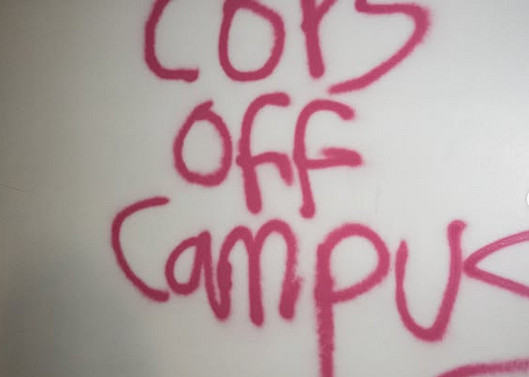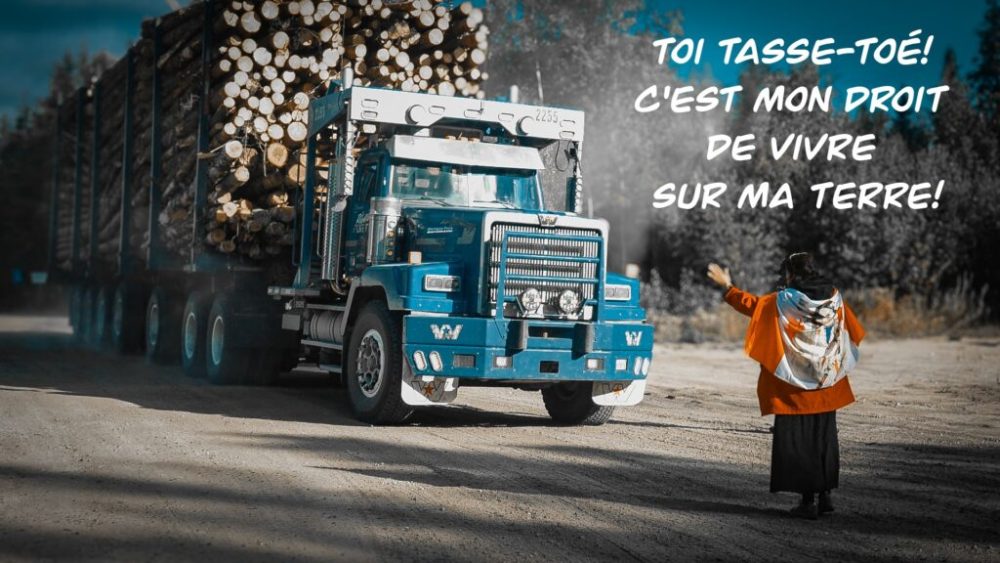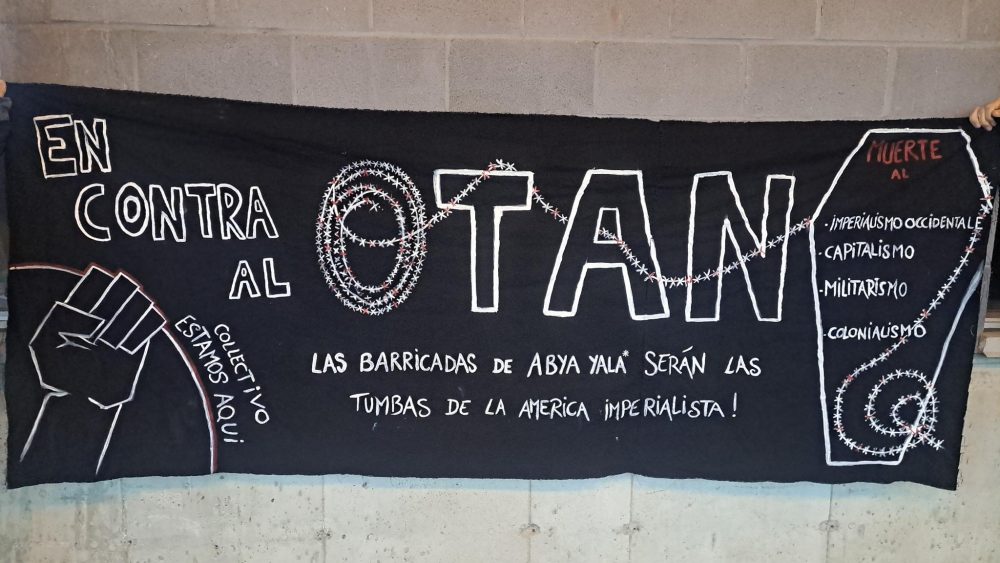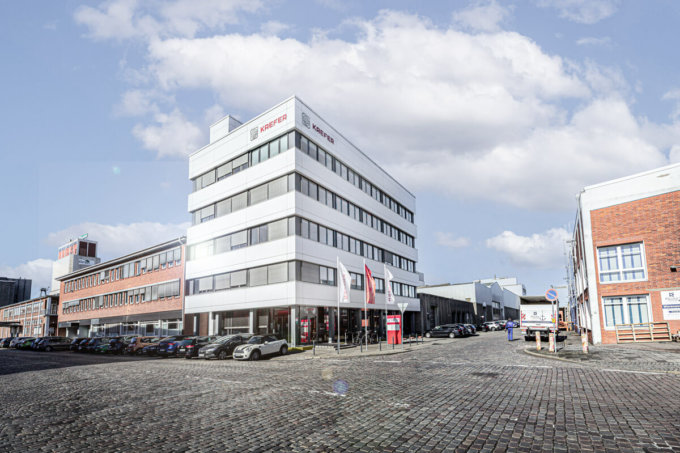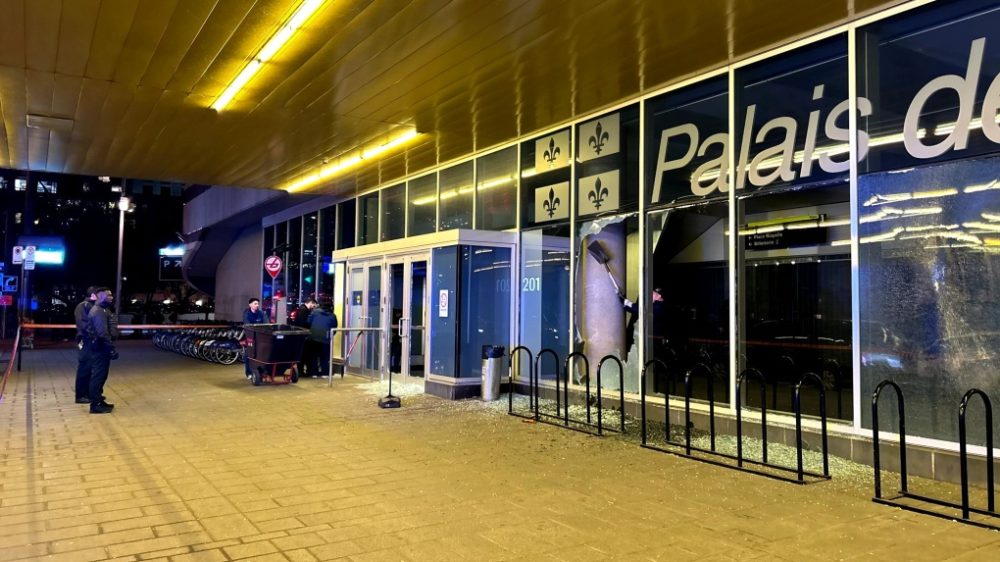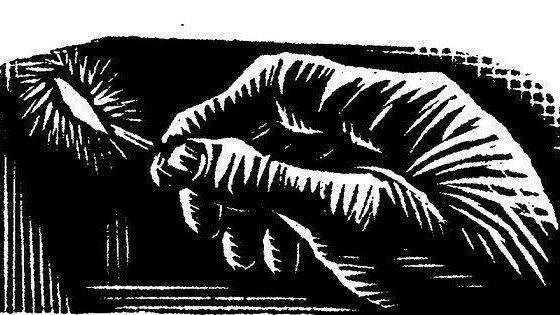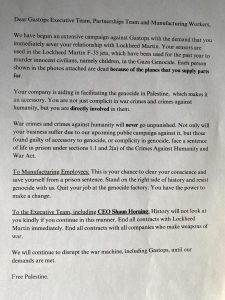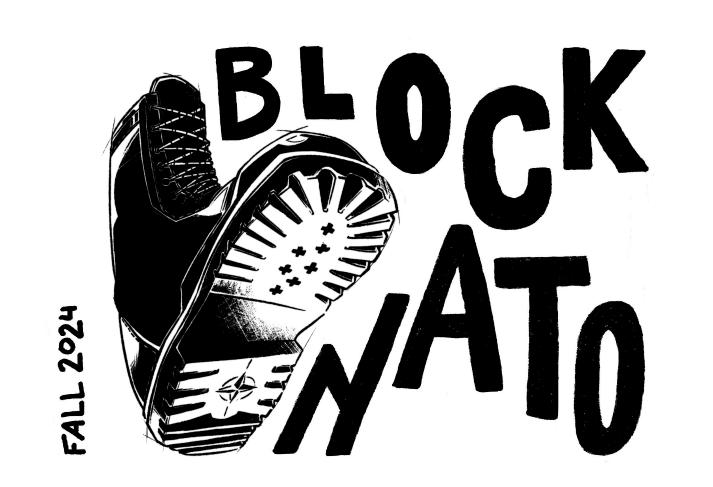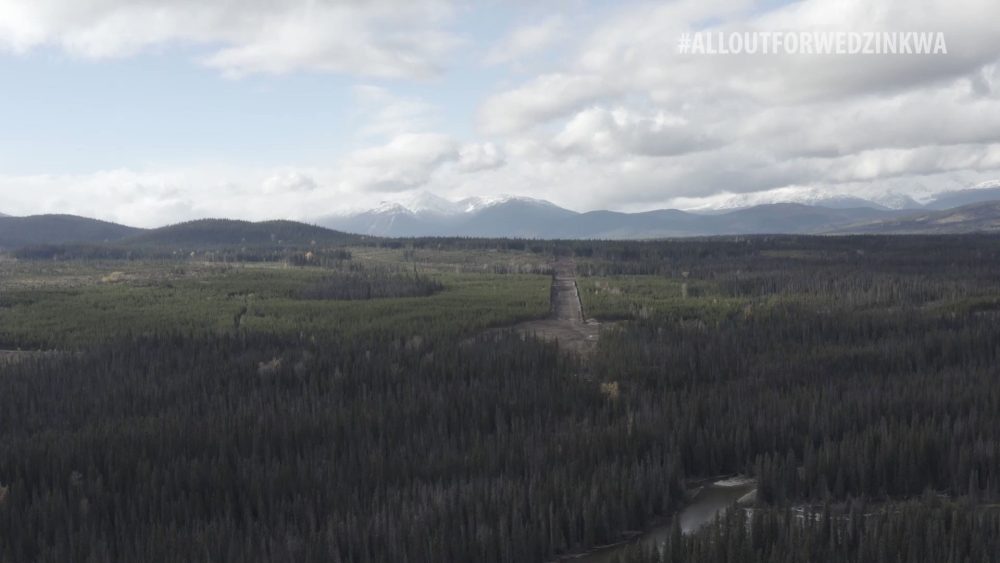
Anonymous submission to MTL Counter-info
Yintah is the latest installment of a long tradition of indigenous documentaries speaking truth to power against colonial violence in so-called Canada. The story told is of an anti-pipeline struggle to protect the richness of life that the Wedzin kwa river offers, a decade long fight that involved not only the Wet’suwet’en peoples of northern British-Columbia, but also hundreds of dedicated non-indigenous comrades who fought valiantly alongside them. Except the film chose to cast them aside.
The documentary portrays land reoccupation through the personal projects of Freda Huson and Molly Wickham over the course of ten years, but also makes a point to frame those individual stories in a more expansive and continual relationship of the Wet’suwet’en people to the land. The conflict over industrial and otherwise settler-colonial exploitation of the land is part of the present, past, and future of the territory, and the film does a good job situating the latest struggle against Coastal Gaslink on a longer timeline. The film ends with a strong position of indigenous resilience in the face of lost battles, and should inspire many that the fight is never over as long as we are alive.
A central argument Yintah makes is one most indigenous social movements have been pushing forward in North America, which is that the land should be under local and traditional jurisdiction of its original peoples. This framework opens the door to a legalistic approach to anticolonial discourse (« Who is the rightful decider? »), which Yintah gives legitimacy to for example by recounting the Delgamuukw case as a historical win for the Wet’suwet’en and Gitxan nations. Referring to or using the western legal system is neither revolutionary nor anarchist, and comrades involved in indigenous solidarity work have highlighted this point of tension before. Yintah‘s non-critical approach to legalistic tactics distances its narrative from an uncompromising and feral position against the colonial state. But I guess it also paints a truthful depiction of how unfortunately many activists end up wasting their time and energy in lawsuits and legal cases. If we can briefly hear Freda say Delgamuukw hasn’t changed anything, then why waste precious screening minutes showcasing the legal fight in a positive light beforehand? It only reinforces reformist aspirations to pursue court battles. Relying on the judicial system to recognize indigenous governance also contributes to creating a new class of indigenous elite deciders (sellouts) that move on to exploit the land at the expense of ecosystems. This is happening right now as the Nisga’a Nation, an indigenous political entity legitimized by a treaty signed in 1998, has welcomed and invested in the construction of the PRGT pipeline, northwest of the CGL line.
The question of jurisdiction is not where anarchists and indigenous land defenders share the most affinity. Indigenous jurisdiction, even put through the lens of a pre-colonial political system, opens the door to legitimizing forms of authority that, in a decolonized future, would pit anarchists against indigenous figures of power, and is also today encouraging power imbalance on current shared sites of struggle. Thankfully Yintah does not shy away from including one scene that recounts one of the most discordant moments of the struggle when chief Namoks decided on his own, in fear of police use of force, to open the Unist’ot’en gates to pipeline workers, against the will of companions on site and Freda herself. This was not the only moment when power was yielded in the name of Wets’uwet’en traditional governance and at the expense of the fight against police and CGL. But it was maybe the most impactful one, and I am thankful this movie scene offers a brief moment of nuance in an otherwise sugarcoated version of the power dynamics on the frontline.
Land is of course absolutely central to anti-colonialism. During the struggle against the Northern Gateway project, the Coastal Gaslink construction and the RCMP’s heightened presence (roughly the 2012-2022 decade), the backroads territory has been the site of an impressive game of snakes and ladders to control the access to isolated valleys. Yintah chose to dedicate a lot of its screening time to traditional uses of the land. We are shown many scenes of harvesting game and berries, the importance of transferring wet’suwet’en knowledges and values to younger generations and the relationship between traditional ways of life and health. Crucial to the #LandBack movement and Indigenous resurgence, I understand why these themes are explored as an exclusively wet’suwet’en story. But the story of confrontation with pipeline projects was not exclusively wet’suwet’en, and Yintah turned a blind eye to the central role anarchists playedin defending the land against industrial invasion. This is what every comrade has been whispering about since the film came out. Over the decade, there has been hundreds of anarchists who, from far away and traveling onsite, dedicated their hearts and their time and sometimes took immense risk to defend wet’suwet’en land. Anarchists organized solidarity actions in both affinity based models and in larger scale social contexts across the country, expanding all the way to Europe and the Pacific Northwest of the US for years, and insurgent tactics have flourished during #ShutDownCanada. According to many first hand accounts, the frontline camps could not have survived without anarchists’ contributions. The struggle was huge and has changed many non-wet’suwet’en people’s lives, many anarchists, and many others as well. Including the solidarity from non-Indigenous peoples would only have strengthened the Wet’suwet’en story of resistance, not diluted it. Do we have the audacity to bring this up as a grievance to our Indigenous friends? Is it totally misplaced to critique an indigenous film that makes no place for non-indigenous peoples? Not PC for sure.
The narrative choice of Yintah to focus on Molly and Freda also sometimes feels almost claustrophobic, and we lose a sense of the scale of the movement that involved thousands. There is a risk that countless people will watch Yintah and think that such a large scale moment of rupture rests on the shoulders of a few key figures, or that indigenous resistance can make do without the solidarity of allies and accomplices across all social identities. Leadership is a natural human dynamic that can organically move people to act, and can shift depending on the relationships in a said group. But there is a fine line between recognizing leadership qualities as natural and beneficial, and the development of a cult of personality that can be created by certain media deformations. The image of Gidimt’en Checkpoint portrayed through its media channels (instagram and youtube) has misled many folks who have unfortunately showed up to camp with unrealistic expectations such as finding a space that is constantly active in preparing confrontation or occupied and maintained mainly by Indigenous peoples. The mediatic focus of the struggle might also have put too much weight on our heroines, and health and the need for a sustainable involvement has been deprioritized. One of my concerns for upcoming struggles is that the film could embolden identity politicians to recreate a social hierarchy that enables abuse of power on future frontlines.
What I find unfortunate is that there is the propensity in activist discourse to constantly portray oneself as a victim. Yintah is unfortunately no exception. The 1h45 minutes of the documentary painfully recounts all the possible events and situations under which the state, the police or extractive industries have oppressed the Wet’suwet’en peoples. Not that we must shy away from truth speaking, or that the string of events of the struggle should be manipulated or distorted (blockades were dismantled, cabins destroyed, people arrested, and so on), but every publication whether it be book, artwork or film, makes choices in the words used, the scenes that are shown and the potential scenes that are left out. The History we remember is the one some chose to write how they saw fit. There are ways to speak of and against domination that are unapologetically defiant, with our sight set on the target. CGL might have completed its construction, but it took them extra billions and a couple years more than anticipated, because a handful of strong hearts were barricading roads, scaring away pipeline workers and sabotaging their equipment. There were countless confrontational moments on the territory that were (maybe, maybe not filmed) left out of the editing. With its narrative constructed around resilience instead of resistance, Yintah might not be able to inspire others to draw their daggers.
It might not be our Wet’suwet’en companions’ responsibility to tell our side of the story, but our complete invisibilisation from the struggle is basically dishonest. If we take a step back, we can see this situation is not new in the historiography of anarchism. Unpleasant to the general opinion and defiant to the leftist movements, anarchist action and involvement in historical events has always been undermined, evacuated, or falsified when it was time to write down a page of History. In some ways the film continues the legacy of writing off anarchists as outside agitators. Instead of recounting how anarchists have been invited to come to the frontlines and have engaged with land defense in a sustained way for years, Yintah litteraly places anarchists outside of the frame of legitimate participants in the struggle, and leaves room for the liberal media narrative of violent hijackers to step forward. This is hard to digest, when we know in reality that there were moments when only masked white anarchists were present and they were asked to pose with warrior flags for a good photo op. As I write this, land defense in northern BC has already kicked off a new chapter of resistance, this time against the PRGT pipeline. When non-Indigenous anarchists show up, they might be once again be met with confusion from Indigenous peoples, just as they were at times during the wet’suwet’en struggle, faced with questions like “why are you here ?” rather than being understood as part of a larger fabric of anti-industiral actors in the region.
Yintah has only received positive public feedback. What is the point of yet another text doing the devil’s work at pointing at the problems? While I wanted to share what I think is valuable criticism that was discussed amongst friends and companions around me, I still think Yintah tells a beautiful story of two exceptional women that is worth sharing, and a story that hopefully inspires other Indigenous peoples to reoccupy their land and defend it against industrial destruction. What I take away from watching the film is the motivation to support and contribute to anarchists telling their own histories. In a world of overlapping truths, different layers of experiences and their takeaways can compliment and contradict each other. We do not need one official History of the past decade of struggle on the yintah.
“If anarchists don’t make their own History, their enemies will. […] Should we not wish that our stories end up in the hands of those who could only write them to suit their own needs” (Plain Words, Roofdruk/Compass editions, 2024).
In an anarchist history of the struggle on the yintah, the question of jurisdiction and other legal approaches would be presented as hindrances to the liberation of land and life. In an anarchist history of the struggle on the yintah, internal conflict would not be shoved under the rug but taken as an opportunity to try to draw lessons from, so we can continue to deconstruct how we relate to each other outside of civilization’s dogmas. In an anarchist history of the struggle on the yintah, we would recount the dozens of barricades on fire, cop attacks and destroyed machinery to remind us we are truly alive and free in the blissful moment of action. And there would probably be many more anarchist histories of the struggle on the yintah, I am after all just one amongst many anarchists.
Suggested further reading
Between Storms, anarchist reflections of solidarity with Wet’suwet’en resistance
Water Falling on Granite
The visceral viewpoint
Call to action against PRGT pipeline


